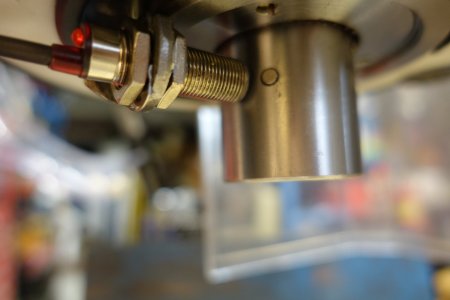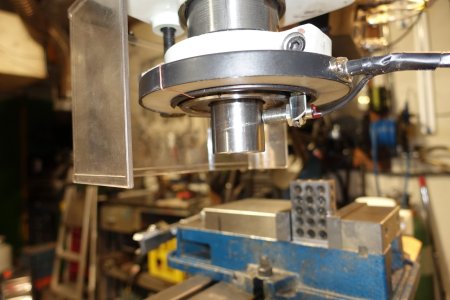Rauce
Ultra Member
I got my 110v tach today and rigged up a little test setup on my drill press. It worked fairly well and matched my handheld optical tach. Only could go down 120rpm with my pulley/drive.I'm glad you are curious. I do many many things out of curiosity alone. Even to the point of spending money I'll never see again.
Your explanation makes GREAT sense in all but one way. The readouts on the two units did not read zero. They typically read higher than actual.
There are two ways that rpm can be derived. One is to count pulses for a given amount of time and the other is to count time between pulses. It is as though they didn't stop counting the time between pulses.
In this latter scenario, your guess makes even more sense than in the other.
As you cause me to think about it more. This business of error detection creeps in too. As I recall, the chinglish in the description strictly talked about engine rpm. Nobody using them in an engine would ever see rpm below 150 or so. Huge engines do go much slower, but those characters would never use a $20 tach.
So ya, perhaps the signal error detection kicks in and resets or something and allows a higher count.
I'm gunna see if I can find out what I bought and get another one to take apart and play with. I think I'll get a 110V one too. It's way cheaper than flying south to go golfing.....
Edit - HEY. I just thought of something else. They were 12V units (which implies automotive). Clearly 110V units are not automotive!
I also dug out my DC one that I never permanently installed and it barely worked at all. Not sure what the issue is because I remember it working sort of okay before? I had sacrificed a very old cellphone brick as the power supply.






